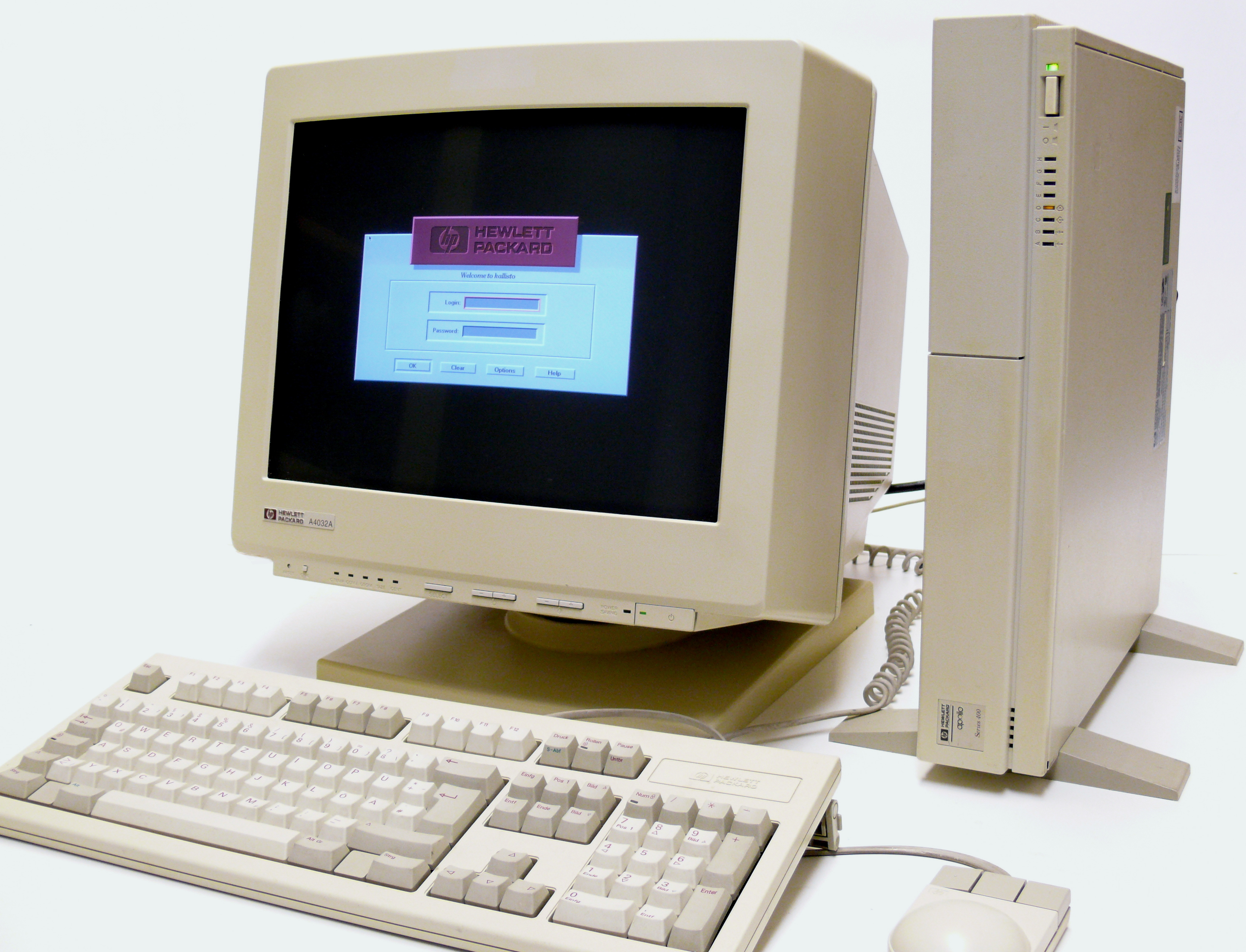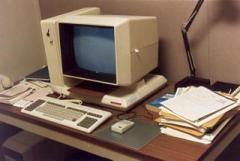|
Visual User Environment
Visual User Environment (VUE or HP VUE) is a discontinued desktop environment developed by Hewlett-Packard, intended for use on Unix workstations. VUE is based on the Motif widget toolkit and targets the X Window System. VUE is a precursor to Common Desktop Environment (CDE), which was also based on Motif. History Work began on VUE in 1988 at Apollo Computer for use with Domain/OS, as an alternative to Apollo's standard DM and wmgr. Shortly later, HP acquired Apollo, where they released the first version of VUE for Domain/OS, and then went on to modify VUE for use with HP-UX. * VUE 1.0 – Released with Domain/OS SR10.4 * VUE 1.1 * VUE 2.0 – Released for HP-UX * VUE 2.0.1 * VUE 3.0 – Released with HP-UX 9.0 in 1992 According to an article published in the ''Hewlett-Packard Journal'', the look and feel of HP-VUE was used when developing the Common Desktop Environment (CDE): After its release, HP endorsed CDE as the new standard desktop for Unix, and provided docume ... [...More Info...] [...Related Items...] OR: [Wikipedia] [Google] [Baidu] |
HP-UX
HP-UX (from "Hewlett Packard Unix") is Hewlett Packard Enterprise's proprietary implementation of the Unix operating system, based on Unix System V (initially System III) and first released in 1984. Current versions support HPE Integrity Servers, based on Intel's Itanium architecture. Earlier versions of HP-UX supported the HP Integral PC and HP 9000 Series 200, 300, and 400 computer systems based on the Motorola 68000 series of processors, the HP 9000 Series 500 computers based on HP's proprietary FOCUS architecture, and later HP 9000 Series models based on HP's PA-RISC instruction set architecture. HP-UX was the first Unix to offer access control lists for file access permissions as an alternative to the standard Unix permissions system. HP-UX was also among the first Unix systems to include a built-in logical volume manager. HP has had a long partnership with Veritas Software, and uses VxFS as the primary file system. It is one of four commercial operating systems that ... [...More Info...] [...Related Items...] OR: [Wikipedia] [Google] [Baidu] |
Common Desktop Environment
The Common Desktop Environment (CDE) is a desktop environment for Unix and OpenVMS, based on the Motif widget toolkit. It was part of the UNIX 98 Workstation Product Standard, and was for a long time the Unix desktop associated with commercial Unix workstations. It helped to influence early implementations of successor projects such as KDE and GNOME desktop environment, which largely replaced CDE following the turn of the century. After a long history as proprietary software, CDE was released as free software on August 6, 2012, under the GNU Lesser General Public License, version 2.0 or later. Since its release as free software, CDE has been ported to Linux and BSD derivatives. History Hewlett-Packard, IBM, SunSoft, and USL announced CDE in June 1993 as a joint development within the Common Open Software Environment (COSE) initiative. Each development group contributed its own technology to CDE: * HP contributed the primary environment for CDE, which was based on HP's ... [...More Info...] [...Related Items...] OR: [Wikipedia] [Google] [Baidu] |
Desktop Environments
In computing, a desktop environment (DE) is an implementation of the desktop metaphor made of a bundle of programs running on top of a computer operating system that share a common graphical user interface (GUI), sometimes described as a graphical shell. The desktop environment was seen mostly on personal computers until the rise of mobile computing. Desktop GUIs help the user to easily access and edit files, while they usually do not provide access to all of the features found in the underlying operating system. Instead, the traditional command-line interface (CLI) is still used when full control over the operating system is required. A desktop environment typically consists of icons, windows, toolbars, folders, wallpapers and desktop widgets (see Elements of graphical user interfaces and WIMP). A GUI might also provide drag and drop functionality and other features that make the desktop metaphor more complete. A desktop environment aims to be an intuitive way for the user to i ... [...More Info...] [...Related Items...] OR: [Wikipedia] [Google] [Baidu] |
HP Software
Micro Focus International plc is a British multinational software and information technology business based in Newbury, Berkshire, England. The firm provides software and consultancy. The company is listed on the London Stock Exchange and is a constituent of the FTSE 250 Index. History Micro Focus was founded in 1976. In 1981, it became the first company to win the Queen's Award for Industry purely for developing a software product. The product was CIS COBOL, a standard-compliant COBOL implementation for microcomputers. In 1998, the company acquired Intersolv Inc, an applications enablement business, for and the combined business was renamed Merant. The same year the company acquired XDB Systems with their XDB Enterprise Server relational database management system. In 2001 the business was demerged from Merant with help from Golden Gate Capital Partners and once again became Micro Focus. It was listed on the London Stock Exchange in 2005. In May 2007, San Diego-based Acu ... [...More Info...] [...Related Items...] OR: [Wikipedia] [Google] [Baidu] |
Motif Window Manager
In computing, the Motif Window Manager (MWM) is an X window manager based on the Motif toolkit. Overview MWM is a lightweight window manager, having robust compliance and configuration of the features it has. MWM first appeared on in the early-1990s, along with the Motif toolkit. MWM supports: Common User Interface (i.e., Alt-Tab is switch windows, a standard), some International support, Common Desktop Environment, X Resource Database (/home/app-defaults/ and runtime), X Session Manager protocol, X Edited Resource Protocol (edit widget data), desktop icons, optional use of images to decorate, and had supported Virtual desktop (removed since 2.1) but now supports non-virtual desktop panning. MWM is a window manager, not a full desktop environment, so it only manages windows; it is expected that configuration, programs, sound, are provided by other programs. A plain text file is parsed to customize menus, user input mappings, management features, and user made functions of the ... [...More Info...] [...Related Items...] OR: [Wikipedia] [Google] [Baidu] |
Apollo Computer
Apollo Computer Inc., founded in 1980 in Chelmsford, Massachusetts, by William Poduska (a founder of Prime Computer) and others, developed and produced Apollo/Domain workstations in the 1980s. Along with Symbolics and Sun Microsystems, Apollo was one of the first vendors of graphical workstations in the 1980s. Like computer companies at the time and unlike manufacturers of IBM PC compatibles, Apollo produced much of its own hardware and software. Apollo was acquired by Hewlett-Packard in 1989 for US$476 million (equivalent to $ million in ), and gradually closed down over the period of 1990–1997. The brand (as "HP Apollo") was resurrected in 2014 as part of HP's high-performance computing portfolio. History Apollo was started in 1980, two years before Sun Microsystems. In addition to Poduska, the founders included Dave Nelson (Engineering), Mike Greata (Engineering), Charlie Spector (COO), Bob Antonuccio (Manufacturing), Gerry Stanley (Sales and Marketing), and Dave Lub ... [...More Info...] [...Related Items...] OR: [Wikipedia] [Google] [Baidu] |
X Window System
The X Window System (X11, or simply X) is a windowing system for bitmap displays, common on Unix-like operating systems. X provides the basic framework for a GUI environment: drawing and moving windows on the display device and interacting with a mouse and keyboard. X does not mandate the user interfacethis is handled by individual programs. As such, the visual styling of X-based environments varies greatly; different programs may present radically different interfaces. X originated as part of Project Athena at Massachusetts Institute of Technology (MIT) in 1984. The X protocol has been at version 11 (hence "X11") since September 1987. The X.Org Foundation leads the X project, with the current reference implementation, X.Org Server, available as free and open-source software under the MIT License and similar permissive licenses. Purpose and abilities X is an architecture-independent system for remote graphical user interfaces and input device capabilities. Each person using a ... [...More Info...] [...Related Items...] OR: [Wikipedia] [Google] [Baidu] |
Hewlett-Packard
The Hewlett-Packard Company, commonly shortened to Hewlett-Packard ( ) or HP, was an American multinational information technology company headquartered in Palo Alto, California. HP developed and provided a wide variety of hardware components, as well as software and related services to consumers, small and medium-sized businesses ( SMBs), and large enterprises, including customers in the government, health, and education sectors. The company was founded in a one-car garage in Palo Alto by Bill Hewlett and David Packard in 1939, and initially produced a line of electronic test and measurement equipment. The HP Garage at 367 Addison Avenue is now designated an official California Historical Landmark, and is marked with a plaque calling it the "Birthplace of 'Silicon Valley'". The company won its first big contract in 1938 to provide test and measurement instruments for Walt Disney's production of the animated film ''Fantasia'', which allowed Hewlett and Packard to formally esta ... [...More Info...] [...Related Items...] OR: [Wikipedia] [Google] [Baidu] |
Motif (software)
In computing, Motif refers to both a graphical user interface (GUI) specification and the widget toolkit for building applications that follow that specification under the X Window System on Unix and Unix-like operating systems. The Motif look and feel is distinguished by its use of rudimentary square and chiseled three-dimensional effects for its various user interface elements. Motif is the toolkit for the Common Desktop Environment and IRIX Interactive Desktop, thus it was the standard widget toolkit for Unix. Closely related to Motif is the Motif Window Manager (MWM). After many years as proprietary software, Motif was released in 2012, as free software under the GNU Lesser General Public License (LGPL-2.1-or-later). History Motif was created by the Open Software Foundation (OSF) to be a standard graphical user interface for Unix platforms. Rather than create a new interface from scratch, OSF opened a Request For Technology (RFT) in 1988 to solicit existing technologies ... [...More Info...] [...Related Items...] OR: [Wikipedia] [Google] [Baidu] |
Workstation
A workstation is a special computer designed for technical or scientific applications. Intended primarily to be used by a single user, they are commonly connected to a local area network and run multi-user operating systems. The term ''workstation'' has been used loosely to refer to everything from a mainframe computer terminal to a PC connected to a network, but the most common form refers to the class of hardware offered by several current and defunct companies such as Sun Microsystems, Silicon Graphics, Apollo Computer, DEC, HP, NeXT, and IBM which powered the 3D computer graphics revolution of the late 1990s. Workstations offer higher performance than mainstream personal computers, especially in CPU, graphics, memory, and multitasking. Workstations are optimized for the visualization and manipulation of different types of complex data such as 3D mechanical design, engineering simulations like computational fluid dynamics, animation, medical imaging, image rendering, and ... [...More Info...] [...Related Items...] OR: [Wikipedia] [Google] [Baidu] |





